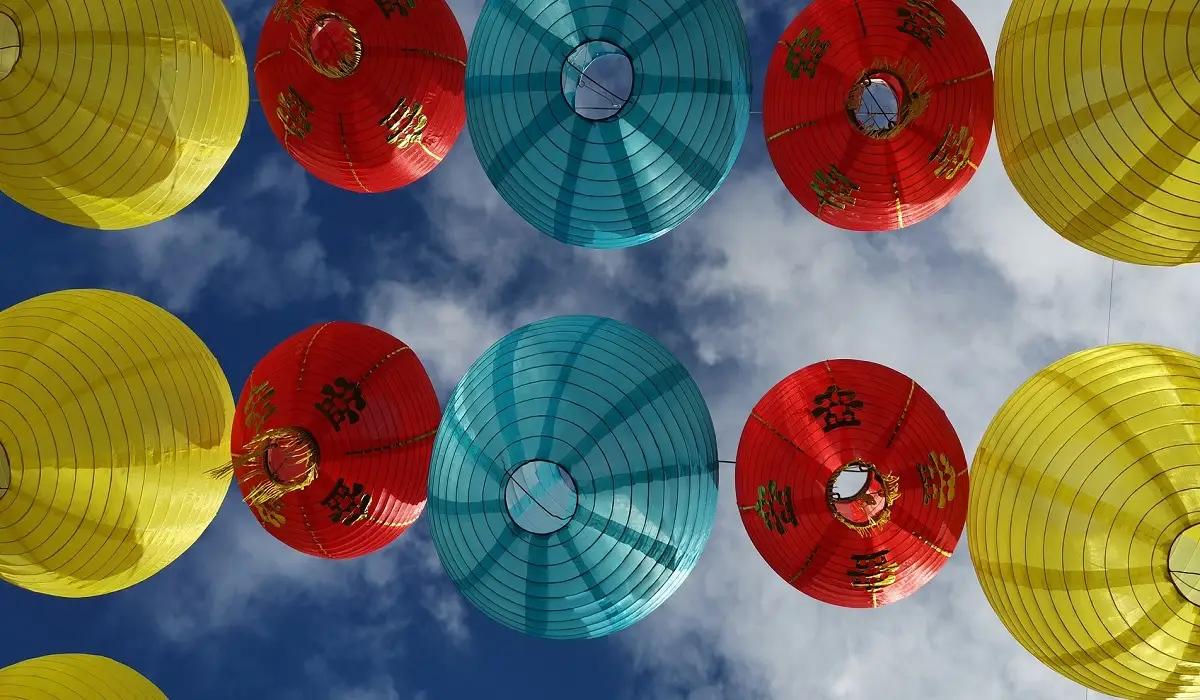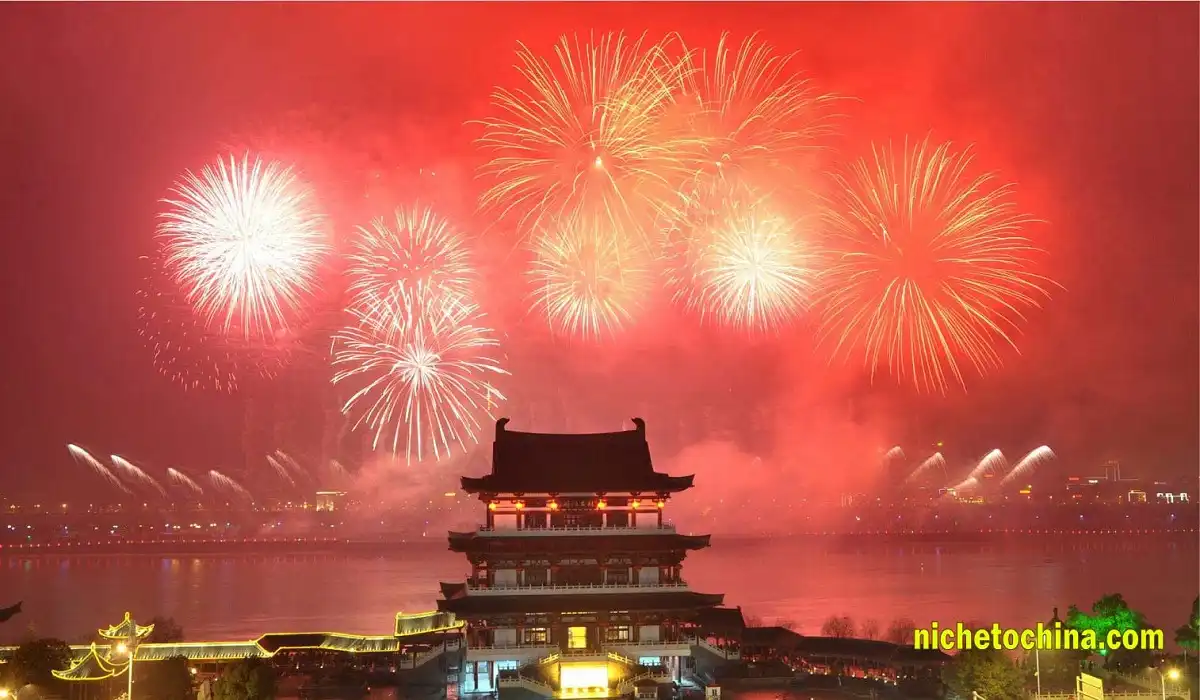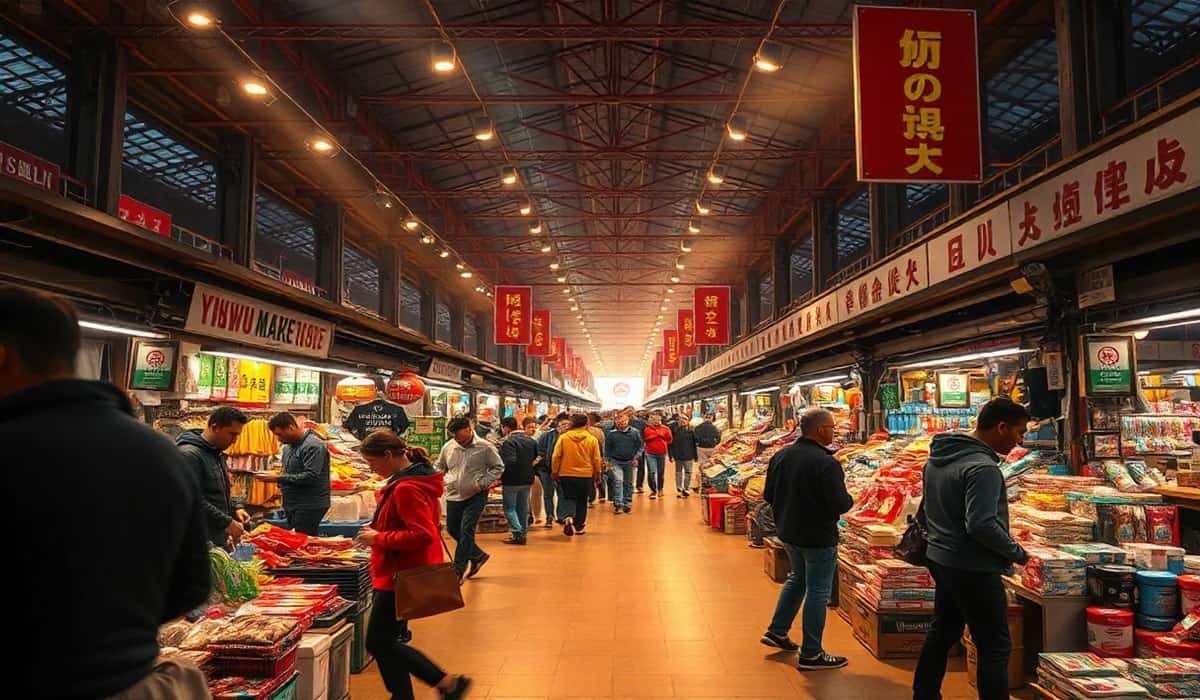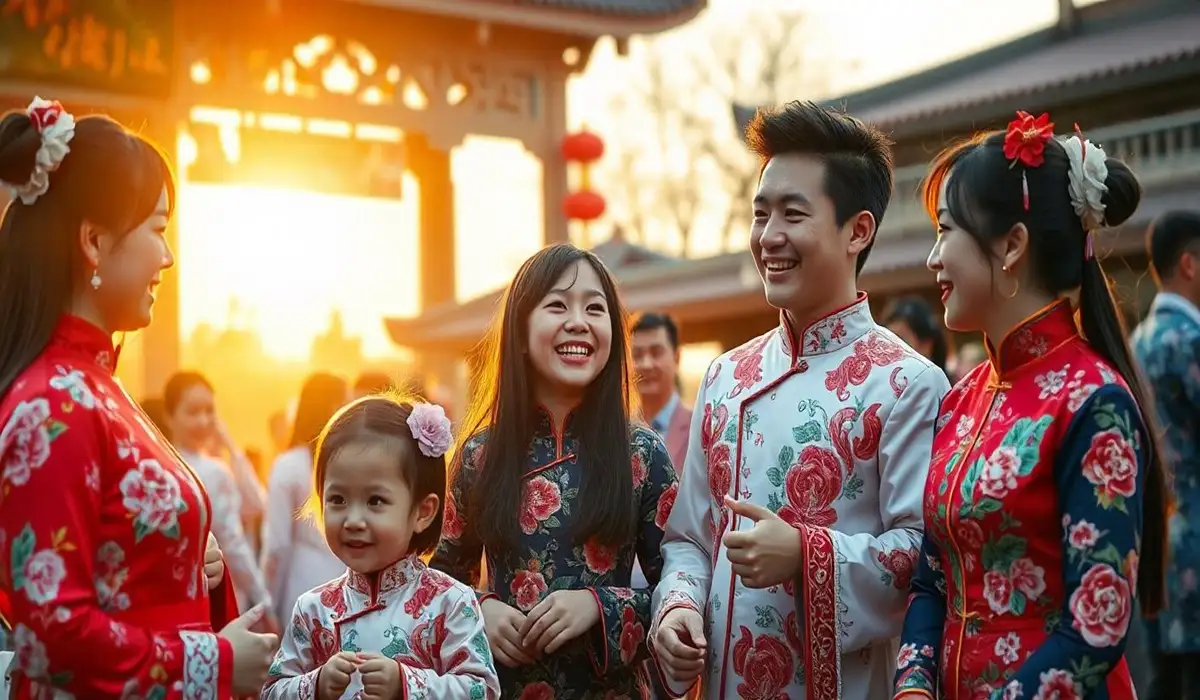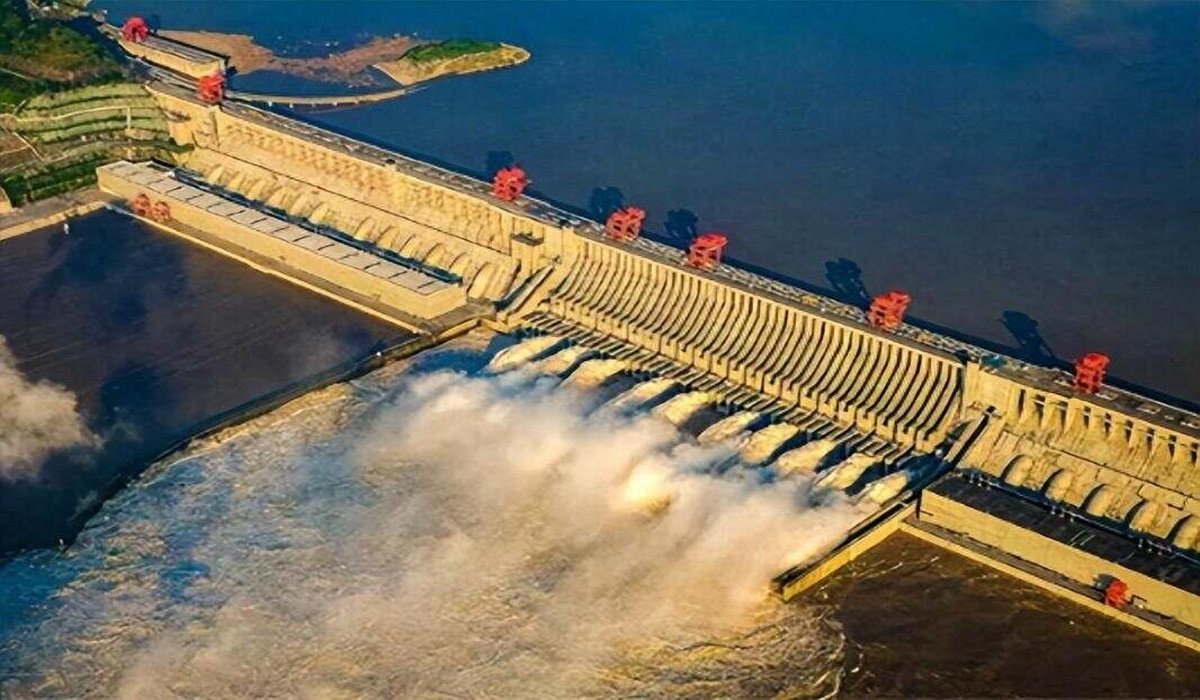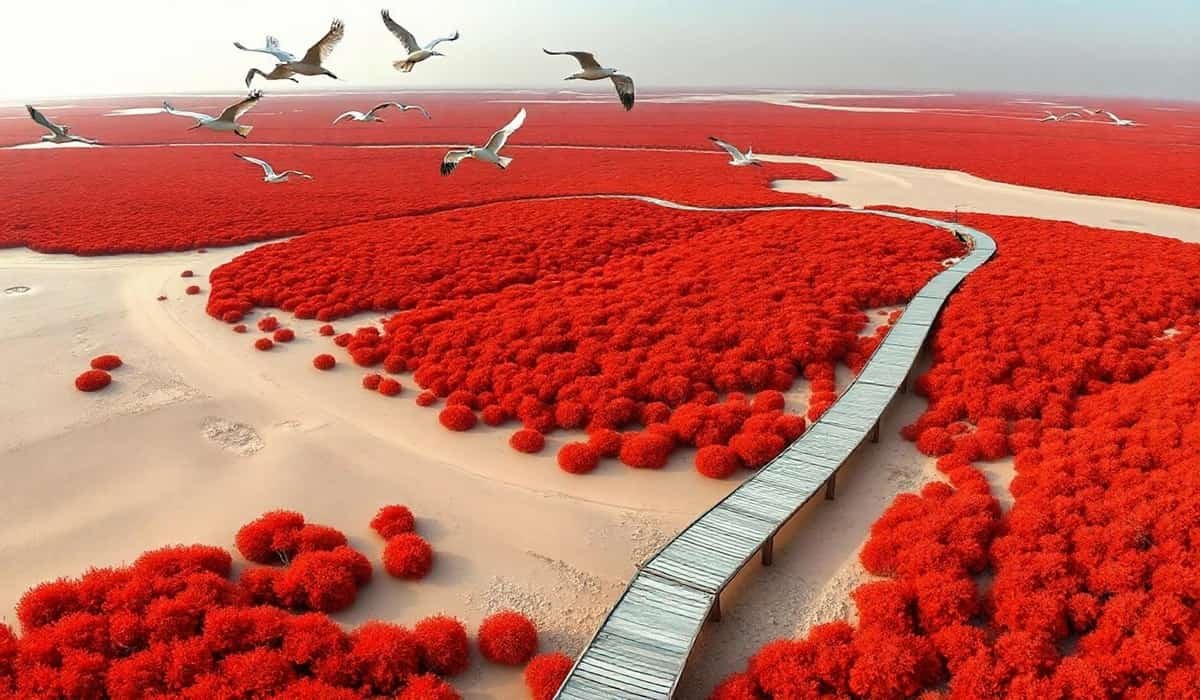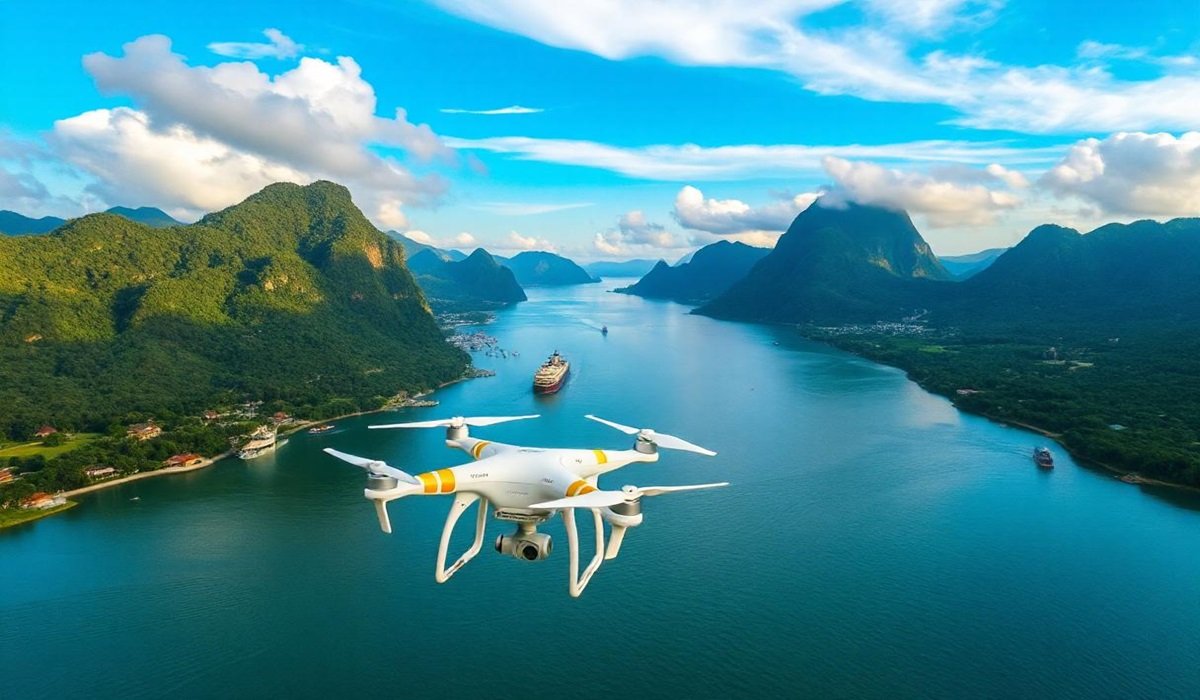China, a land of ancient traditions and breathtaking scenery, attracts visitors with its many top places to visit in China. From historic landmarks to breathtaking natural wonders, each destination provides a distinct glimpse into China’s rich history and natural beauty, making them some of the best travel destinations in China. Whether you’re an adventurer seeking the thrill of the unknown or a history buff looking to delve into the past, these top ten destinations will captivate you.
1. The Great Wall of China
Why Visit:
The Great Wall is one of the most famous landmarks in the world and a must-see attraction in China. It stretches over 13,000 miles and offers amazing views of China’s landscapes. Walking along the Wall lets you experience its incredible history and beauty. The best time to visit the Great Wall of China is during Spring or Autumn. People often say (不到长城非好汉, bù dào Chángchéng fēi hǎohàn) means “He who has not climbed the Great Wall is not a true man” emphasizes the Wall’s importance as a symbol of persistence and personal achievement. For visitors, climbing the Great Wall is both an affirmation of their journey and a test of determination. A Step by Step guide can be found at Great Wall of China as million of the people are visiting every year.

Top Attractions:
Visit sections like Badaling for easy access or Jinshanling for a more adventurous hike. Each part of the Wall has its own charm and scenic views.
How to Get There:
Most visitors start their journey from Beijing. From there, you can take a direct bus or train to the Wall’s popular sections. The Badaling section is the most accessible, with frequent buses available from Beijing’s city center. For a more adventurous route, consider hiking from Jiankou to Mutianyu.
Cost:
Buses cost around ¥20-30, and trains are about ¥30-50. Private tours or car rentals will be more expensive.
Entry Ticket:
Tickets range from ¥40-60, depending on the section. It’s a good idea to buy tickets in advance, especially during peak times.
Time to Visit:
Plan to spend 4-5 hours exploring. Early mornings or late afternoons are best for photos and avoiding crowds.
Best Time to Visit:
Spring (April-May) and Autumn (September-October) are ideal due to mild weather and fewer visitors.
2. The Forbidden City, Beijing
Why Visit:
The Forbidden City was the home of Chinese emperors for over 500 years and is one of the top attractions in Beijing. It’s the largest palace complex in the world, with over 9,000 rooms. Visiting here is like stepping back in time.

Top Attractions:
Key spots include the Hall of Supreme Harmony and the Imperial Garden. Guided tours are available and can provide more detailed information about the palace. The Forbidden City’s grandeur reflects the traditional Chinese concept of the emperor as the “Son of Heaven” and the palace as a microcosm of the universe. This architectural marvel symbolizes the power and centrality of the emperor in Chinese history.
How to Get There:
The Forbidden City is located in central Beijing, easily accessible by subway (Tiananmen East or West Station). Public buses and taxis are also convenient options.
Cost:
Subway fares are around ¥3-6, while taxis cost about ¥30-50.
Entry Ticket:
Tickets are ¥60 during the high season (April-October) and ¥40 off-season. Booking online in advance is recommended to skip the lines.
Time to Visit:
Spend 3-4 hours exploring the palace. A guided tour can enhance your experience.
Best Time to Visit:
Spring and Autumn are the best times for pleasant weather and fewer crowds. Winter can be cold but quieter.
3. Jiuzhaigou Valley, Sichuan
Why Visit:
Jiuzhaigou Valley is known for its beautiful lakes, waterfalls, and colorful forests, making it one of the top natural wonders in China.. It’s often called “paradise on earth” due to its stunning natural beauty.
 Top Attractions:
Top Attractions:
The Five Flower Lake and Pearl Shoal Waterfall are must-see spots. Autumn is especially beautiful when the leaves change color. The name “Jiuzhaigou” means “Nine Village Valley,” reflecting the nine Tibetan villages that surround it. The valley blends stunning natural beauty with Tibetan cultural elements.
How to Get There:
Fly to Jiuzhai Huanglong Airport, located about 88 kilometers from Jiuzhaigou Valley. From the airport, take a bus to the valley, which takes around 1 hour.
Cost:
Flights to Jiuzhaigou can be expensive, depending on the season. Local buses cost around ¥45.
Entry Ticket:
The ticket price is ¥220. It’s recommended to purchase tickets in advance, especially during peak seasons.
Time to Visit:
Plan to spend a full day exploring the valley to appreciate its beauty fully.
Best Time to Visit:
Autumn (October) offers the best colors. Spring and Summer are also good but can be more crowded.
4. West Lake, Hangzhou
Why Visit: West Lake is famous for its serene beauty and traditional Chinese charm. Here are some travel tips for China to enhance your visit. It’s a great place to relax and enjoy picturesque views. Bai Juyi’s poem “On the West Lake” beautifully captures the lake’s serene and enchanting atmosphere.

Top Attractions:
Visit the Su Causeway, Broken Bridge, and take a boat ride on the lake. The lake has inspired countless poets and artists
How to Get There:
Located in Hangzhou city center, West Lake is easily reachable by bus or taxi. The lake’s central location makes it accessible from most parts of the city.
Transportation Cost:
Bus fares are around ¥2-5, while taxi rides cost approximately ¥30-50.
Entry Ticket:
Visiting West Lake is free, but some specific attractions or boat rides may have an additional cost.
Time to Visit:
Spend 3-4 hours exploring the lake and its surroundings.
Best Time to Visit:
Spring and Autumn offer the best weather and fewer tourists. Summer can be hot and crowded.
5. Zhangjiajie, Hunan
Why Visit:
Zhangjiajie is famous for its towering rock formations, which inspired the floating mountains in the movie ‘Avatar,’ making it a top spot for adventure travel in China. It’s a must-visit for adventure seekers and nature lovers. Zhangjiajie’s unique landscape is closely tied to local Tujia folklore, enriching the experience with cultural context.

Top Attractions:
Don’t miss the Avatar Hallelujah Mountain, the Glass Bridge, and the Golden Whip Stream.
How to Get There:
Fly into Zhangjiajie Hehua Airport, then take a bus or taxi to the park.
Cost:
Flights vary in price, and local transport costs around ¥20-50. The Glass Bridge costs ¥80-120 one way.
Entry Ticket:
The park ticket is around ¥248. Buying tickets in advance is recommended.
Time to Visit:
Spend 2-3 days to experience the major attractions and enjoy the scenic beauty
Best Time to Visit:
Spring and Autumn offer the best weather and views. Summer can be hot and crowded.
6. Li River, Guilin
Why Visit:
The Li River is known for its stunning karst landscape, with dramatic limestone peaks and clear waters. The best time to visit Li River is from April to October. A cruise on the river provides breathtaking views. The Li River’s beauty has been a muse for Chinese artists and poets for centuries, often featured in traditional art and literature.

Top Attractions:
Take a cruise from Guilin to Yangshuo to see the beautiful landscapes and traditional villages.
How to Get There:
Fly to Guilin Liangjiang International Airport, then take a bus or taxi to the river cruise departure point.
Transportation Cost:
Flight prices vary, and local transport costs around ¥20-50.
Entry Ticket:
River cruise tickets cost between ¥200-400 depending on the season and cruise type.
Time to Visit:
Allocate 4-5 hours for the cruise to fully appreciate the scenic beauty.
Best Time to Visit:
April to October is ideal for good weather and clear views. Winter can be cold but less crowded.
7. Mogao Caves, Dunhuang
Why Visit:
The Mogao Caves, also known as the Thousand Buddha Caves, are a treasure trove of Buddhist art and one of the top historical sites in China.. These ancient caves, with their exquisite murals and sculptures, provide a fascinating glimpse into the cultural exchanges along the Silk Road.

Top Attractions:
Explore the decorated caves and learn about the rich history of the Silk Road. Guided tours can provide additional insights. Known as the Dunhuang Caves, they were a major center of Buddhist art and culture along the Silk Road, blending influences from China, India, and Persia.
How to Get There:
Fly into Dunhuang Airport, then take a bus or taxi to the caves.
Cost:
Flights and local transport can be expensive, with local transport around ¥20-50.
Entry Ticket:
Entry Tickets are approximately ¥200. Book in advance to avoid long waits.
Time to Visit:
Spend 2-3 hours exploring the caves and learning about their history.
Best Time to Visit:
Spring and Autumn offer comfortable temperatures and clear skies.
8. Gulangyu Island, Xiamen
Why Visit:
Gulangyu Island is known for its European-style architecture, scenic beaches, and artsy vibe, making it one of the hidden gems in China. It’s a great place to explore and enjoy a slower pace of life. Often called the “Piano Island” due to its rich musical heritage, Gulangyu is home to numerous piano studios and performances.

Top Attractions:
Visit the Piano Museum, explore the island’s historic buildings, and relax on the beaches. Gulangyu is ideal for capturing beautiful colonial architecture and scenic coastal views.
How to Get There:
Take a ferry from Xiamen city center to Gulangyu Island.
Cost:
Ferries cost around ¥35-50. Local transportation is minimal, as the island is best explored on foot.
Entry Ticket:
The island is free to visit, but some attractions may have entry fees.
Time to Visit:
Spend a full day to see the main attractions and enjoy the island’s atmosphere.
Best Time to Visit:
Spring and Autumn offer pleasant weather and fewer tourists.
9. Kanas Lake, Xinjiang
Why Visit:
Kanas Lake is surrounded by snow-capped mountains and dense forests, making it one of the top tourist spots in China. Its clear blue waters and stunning scenery make it a perfect spot for nature lovers and photographers. The name “Kanas” comes from a local Mongolian term meaning “lake surrounded by beautiful mountains,” highlighting its breathtaking scenery.

Top Attractions:
Walk around the lake, visit Hemu Village, and take in the views from the observation deck.
How to Get There:
Fly to Kanas Airport, then take a bus or taxi to the lake area.
Cost:
Flights and local transportation can be expensive, with local transport around ¥200-300.
Entry Ticket:
Entry fees are about ¥100. It’s best to book tickets in advance.
Time to Visit:
Spend 2-3 days exploring the lake and nearby areas.
Best Time to Visit:
Summer (June-August) is ideal for warm weather and clear views.
10. Huangshan (Yellow Mountain), Anhui
Why Visit:
Huangshan, or Yellow Mountain, is famous for its unique granite peaks, ancient pine trees, and sea of clouds, and is a renowned UNESCO World Heritage site in China. It’s a UNESCO World Heritage site known for its natural beauty. Huangshan is known as “the most fantastic mountain in China” due to its dramatic and beautiful landscapes. It has inspired countless Chinese paintings and poems.

Top Attractions:
Explore the famous peaks like Lotus Peak, Bright Summit, and enjoy the hot springs, The sunrise views are particularly breathtaking.
How to Get There:
Fly to Huangshan Tunxi Airport, then take a bus or taxi to the mountain base. A cable car can take you up the mountain faster.
Cost:
Flights and local transport vary. The cable car ride costs around ¥80-120 one way.
Entry Ticket:
The ticket is approximately ¥230. Booking in advance online can help avoid long lines.
Time to Visit:
Plan for 2-3 days to experience the mountain’s beauty and attractions.
Best Time to Visit:
Autumn and Spring are ideal for hiking and sightseeing with clear skies and mild temperatures.
Pro tip from Professional:
Exploring China’s finest tourist locations on a budget is both possible and rewarding with proper planning. Here are some budget travel tips for China to help you make the most of your trip. To save the most money, book your flights and hotels ahead of time and go during off-peak seasons. Use China’s wide and efficient public transportation system, such as high-speed trains and local buses, to reduce travel costs. Choose low-cost accommodations such as hostels or guesthouses, and eat authentic local cuisine at reasonable prices. Use free or low-cost attractions and buy tickets for popular sites online to get discounts and avoid lineups. Traveling in groups can also result in big savings. Following these cost-effective tactics will allow you to enjoy China’s breathtaking scenery and rich cultural heritage without breaking the bank.
Recommended Article For Pro Traveller:
1. Yangshuo Rock Climbing | Everything You Need To Know

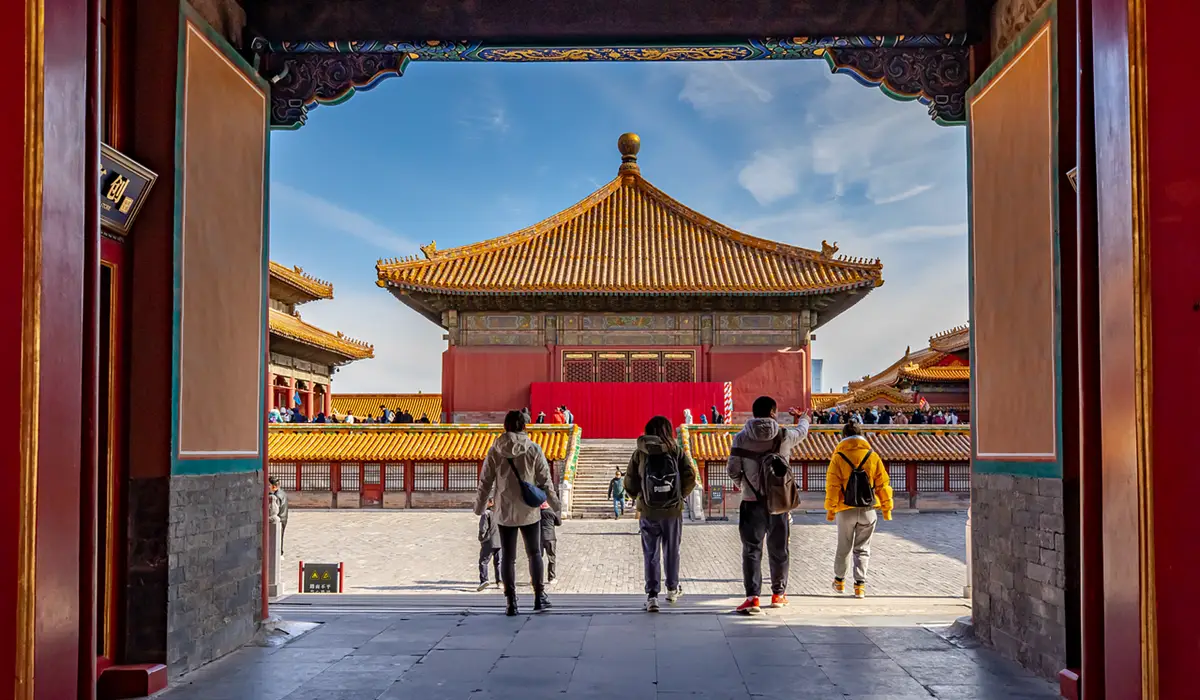
 Top Attractions:
Top Attractions:

